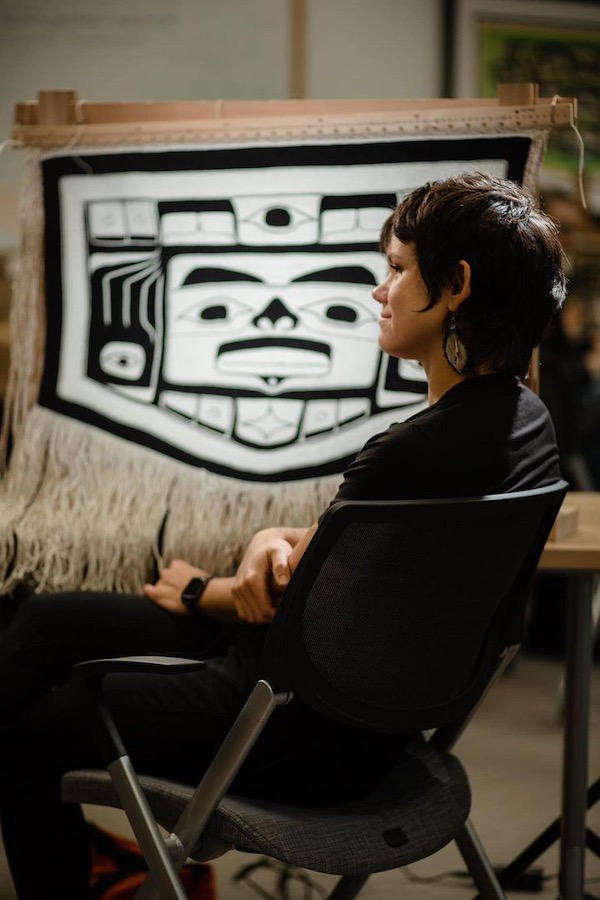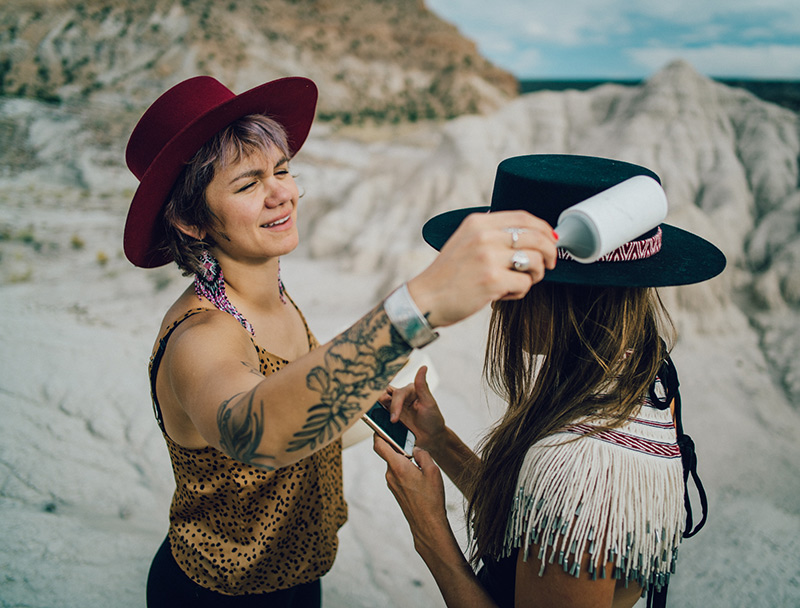About

Our mother moved us to the Southwest from Juneau, Alaska in 1987, while I was still gestating in her tummy. She studied fashion design at IAIA that following year, and always felt it was then and there that everything happened for her. The Southwest became her artist retreat, where she made her work. When she’d return to the Northwest Coast, it was always “go-go-go”; a calendar full of workshops, parties, events. In the Southwest, she learned to relax; tea in the morning sun, walking, camping, swimming, shopping.
Immersed in the Pacific Northwest’s rainforest, my older siblings and parents knew the quench of community swollen with definite sustenance. For me, it was the innocence of giant mountains blushing at their Southwestern sunset, and the poetic immensity of the starry night that nourished me into this being.
We are steeped in a specific slurry of climates, cultures, moments, commitments, whims — from a millennia of memories passed onto us by ancestors and dreamed up by those to come. When we let a bit of us seep out onto paper, canvas, panel, fiber — the vastness of our infinite selves finds a tangible form, indefinitely. And this is art.
Biography
Ursala Hudson (Kadusné) is an interdisciplinary artist of German, English, Filipino and Alaska Native (Tlingit) descent. She is T’ak Deintaan clan from the Head House of the Raven moiety. Through her primary mediums of paint and textile, she engages fields of Indigenous feminisms and Native spirituality to address the colonial project, institutional reform and cultural rematriation.
Raised in a household of full-time artist parents, printmaker Bill Hudson and renowned weaver Clarissa Rizal, much of her informal education was received through osmosis. She learned the fundamentals of graphic design, Northwest Coast weaving, painting, photography, and regalia-making through material preparation and observation. Beyond her parents’ studio, Ursala learned beadwork and garment construction from her grandmothers, aunties, sister, and community members. Formally, she holds an MFA from the Institute of American Indian Arts, received under mentorship from Tanya Lukin Linklater, Jackson Polys, Anna Hoover, and Jordan Poorman Cocker.
Ursala understands art-making as a holistic practice that extends far beyond concept or product. Steeped in a worldview that art is the remnants of infinite intertwined actions and players, everything from landscaping to mothering, river to cosmos, is a participant in the creative process. Therefore, we are always co-creating, and our work is never the sole product of an individual. Each artwork that Ursala creates is a tribute to ancestors that came before and descendants that have yet to come.
Her works have been exhibited and activated in international spaces, including the Smithsonian’s Renwick Gallery in Washington D.C., Indigenous Fashion Week Toronto, the SWAIA runway invitational in Santa Fe, New Mexico, and the Venice Biennale, Italy. Her work has been acquired by the Burke Museum, The Newark Museum of Art, Renwick Gallery of the Smithsonian American Art Museum, The Gochman Family Collection, and The National Museum of the American Indian. She is a recipient of fellowships and residencies from NDN Collective, Native Arts and Culture, First Peoples Fund, the Institute of American Indian Arts, and The Church Sag Harbor. Her work has been awarded several awards, including Best of Show at the Washington State History Museum’s In the Spirit 2021.
Ursala lives (works) on the ancestral lands of the Ute, Puebloan, Apache, and Diné in Southwest Colorado with her two daughters, Amelie and Simone, their father, sculpture artist Chris Haas, and her father, social critic Bill Hudson.

Kadusné
“Kadusné” is the Tlingit name given to me by my mother. It is a verb, translating as “they are weaving”. As my daily rituals evolve to support deliberate creativity, I refer to my inner “diety”, or essential self, as Kadusné. Immediately, upon honoring the name and divine essence, the two personas yoke. The Ego tends to draw back, the ancestors step closer, and Kadusné can be found working.
